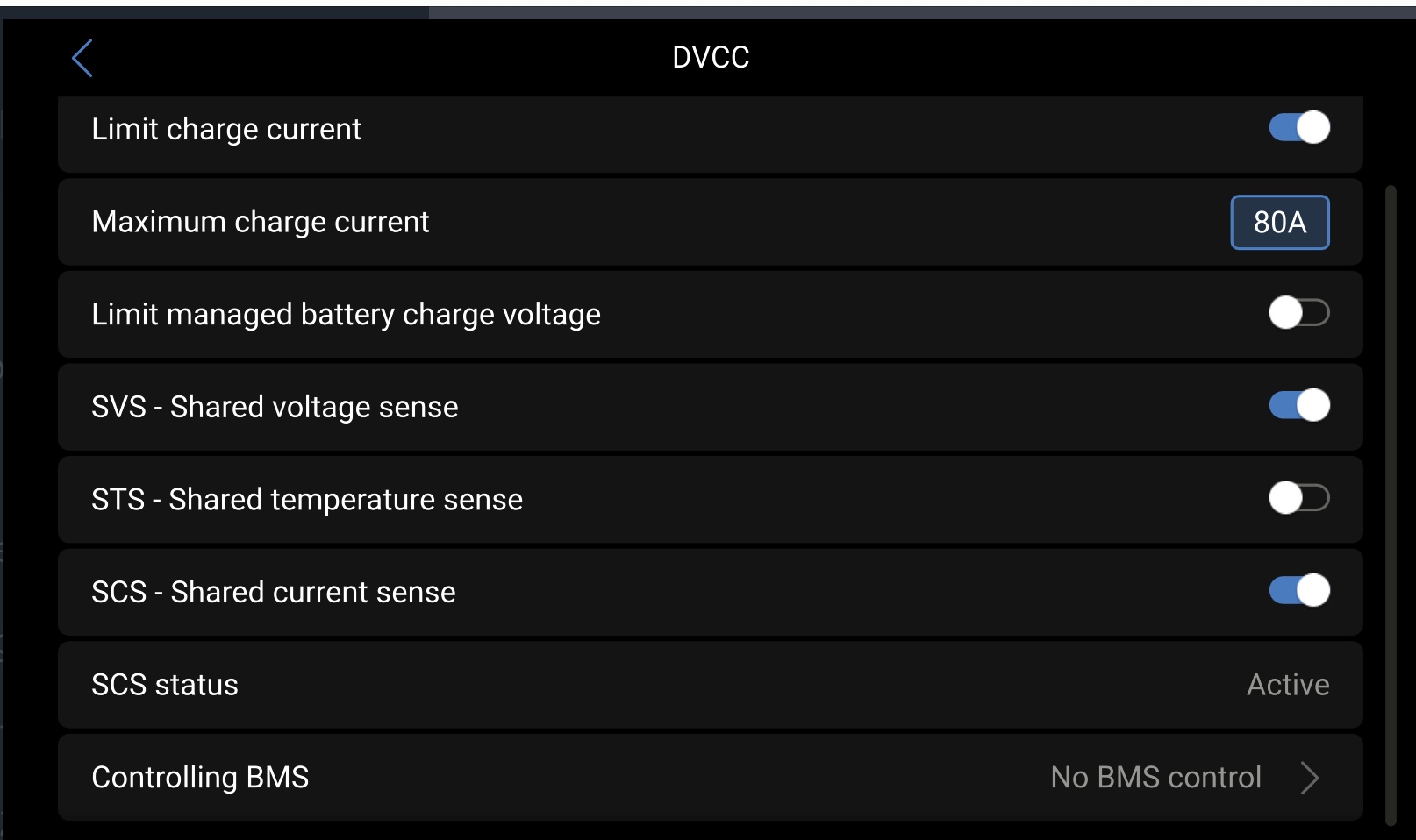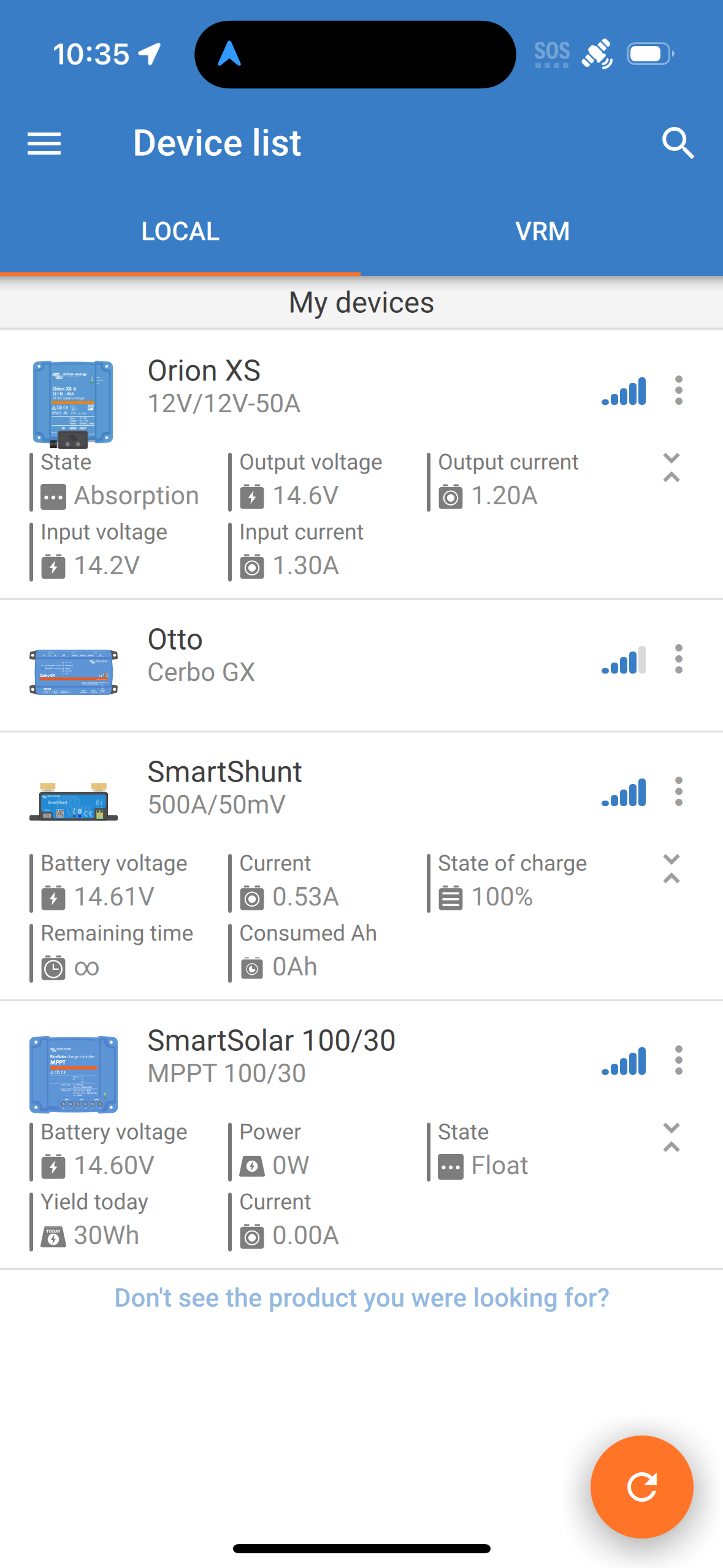I recently swapped my Orion 12/12-30 for an Orion XS and am trying to enable DVCC to prioritize solar over alternator (DC charging).
Firmware (all current I believe)
Orion XS firmware 1.03
SmartSolar MPPT 1000/30 firmware 1.64
Cerbo Firmware 3.40-17 (beta)
Smart Shunt firmware 4.16
DVCC configuration

- I am using 300Ah of Battleborn batteries so I have BMS control disabled.
- I set Maximum charge current to 80A
(theory being XS 50 + MPPT 30 = 80A should not limit max charge current
Question / Problem?
You can see in this screen shot that the Orion XS is in Absorption and providing 1.20A of charge, and the MPPT is in Float and providing 0A charge.
 I would have expected the oposite, with the solar prioritized and providing a small charge with the Orion at 0A. I say that based on my understanding from reading section 11.4 in the Cerbo GX manual on DVCC.
I would have expected the oposite, with the solar prioritized and providing a small charge with the Orion at 0A. I say that based on my understanding from reading section 11.4 in the Cerbo GX manual on DVCC.
Goal
My goal is to use solar as much as possible to reduce load on the alternator / engine.
